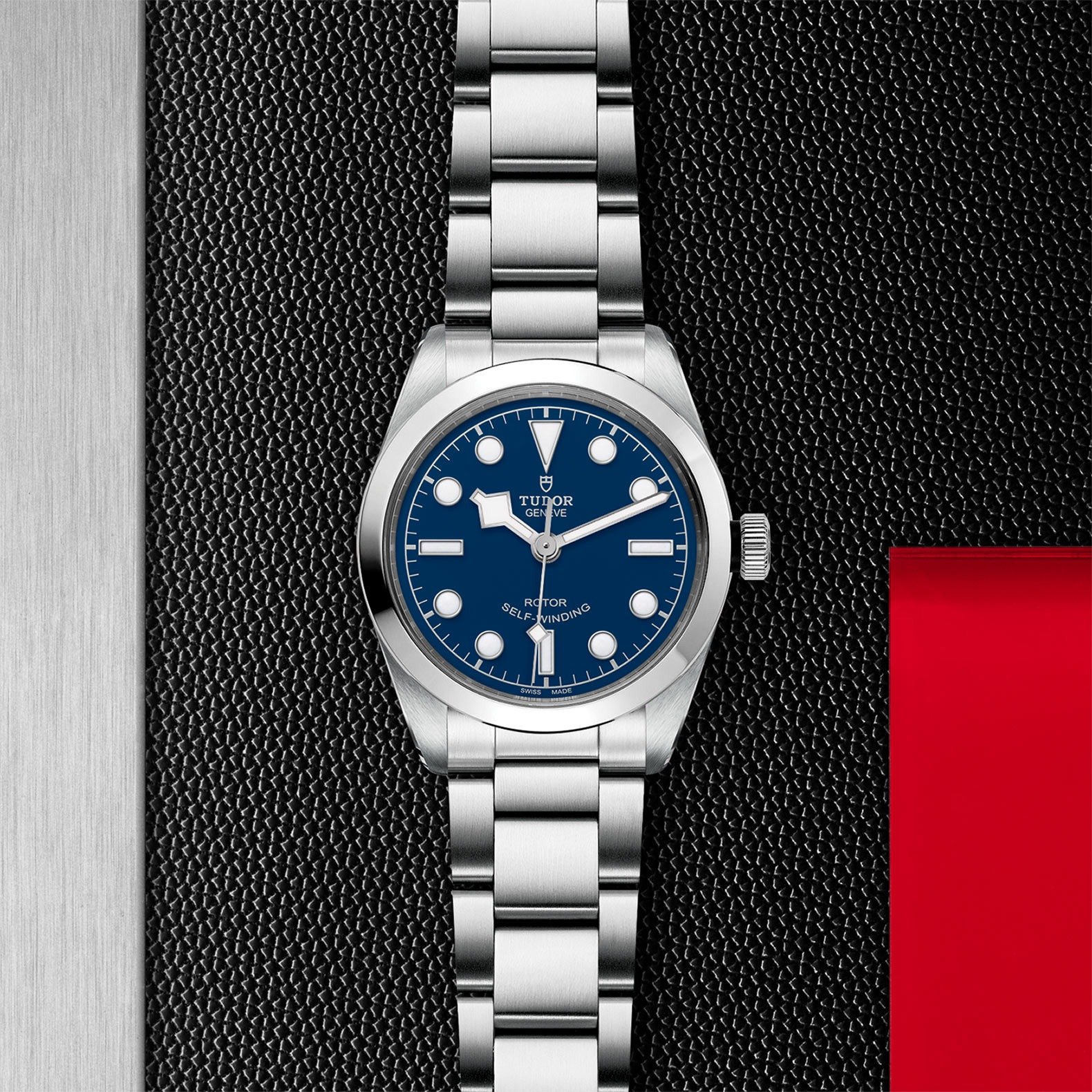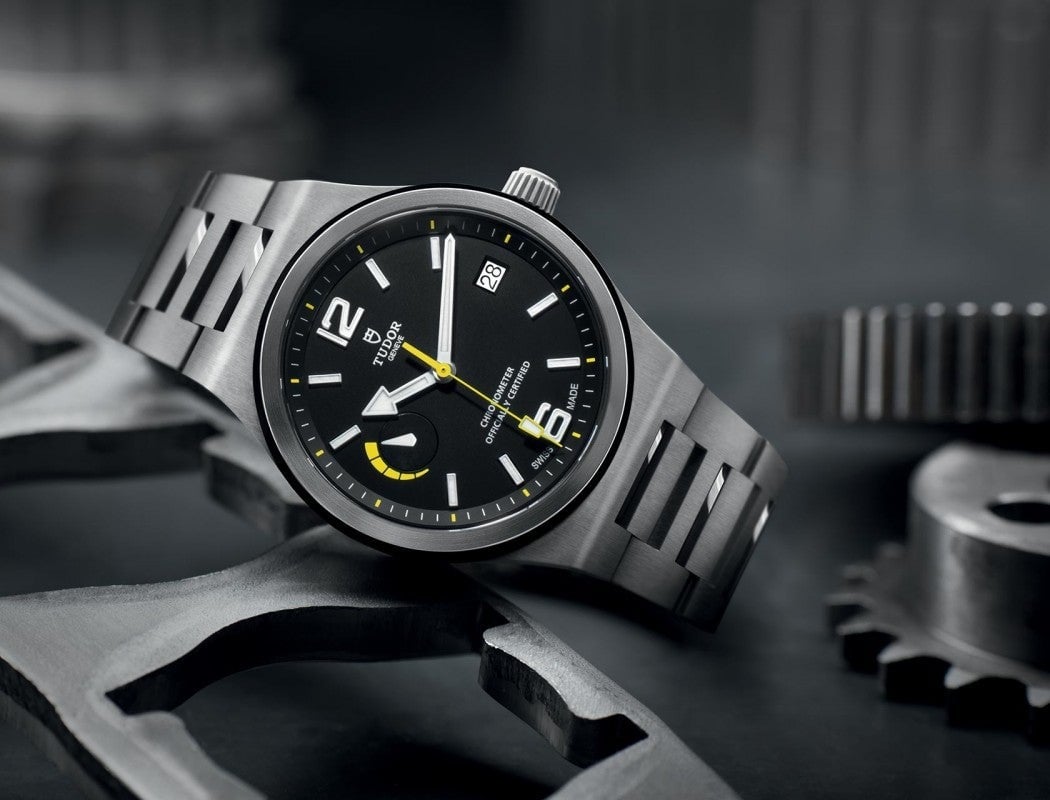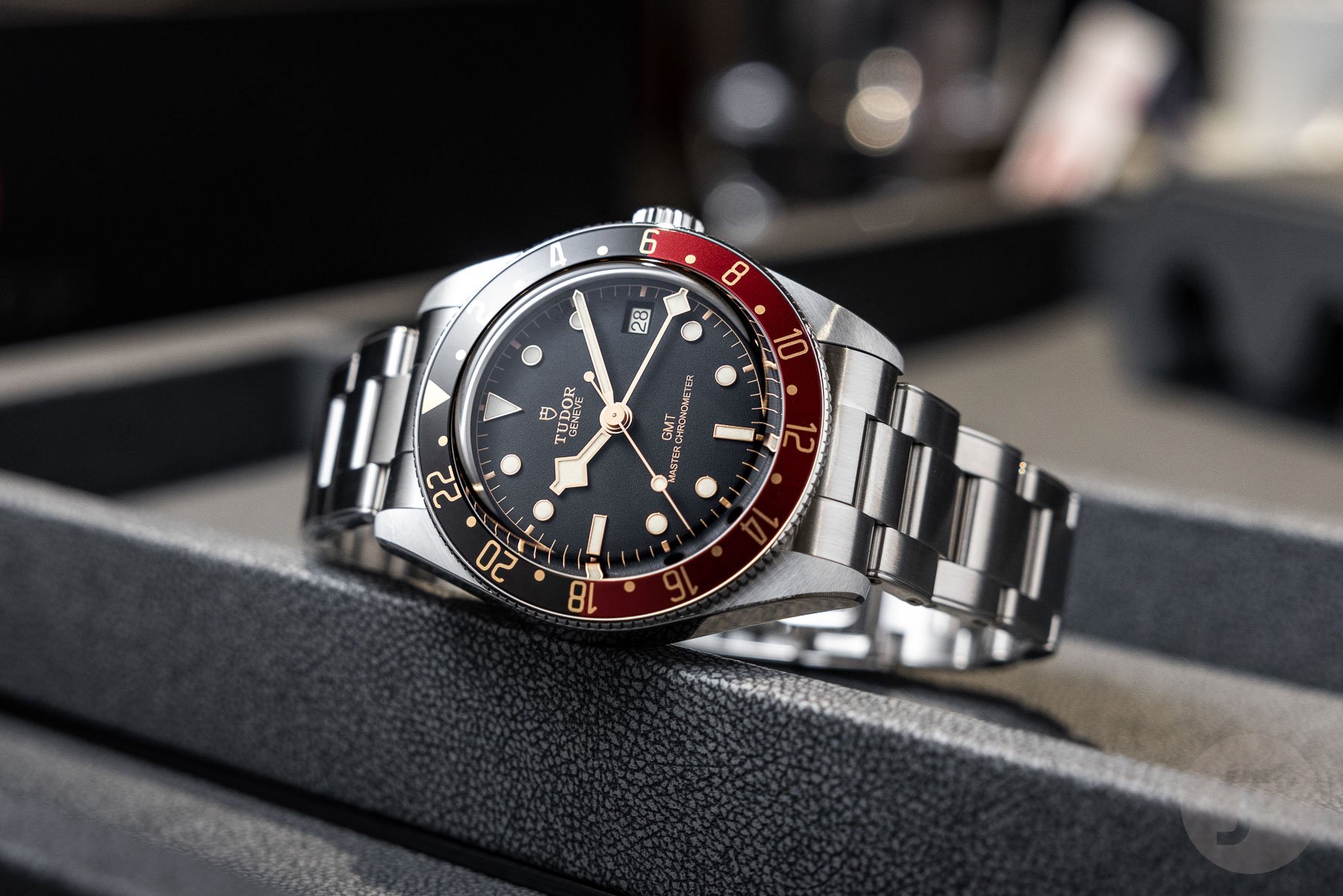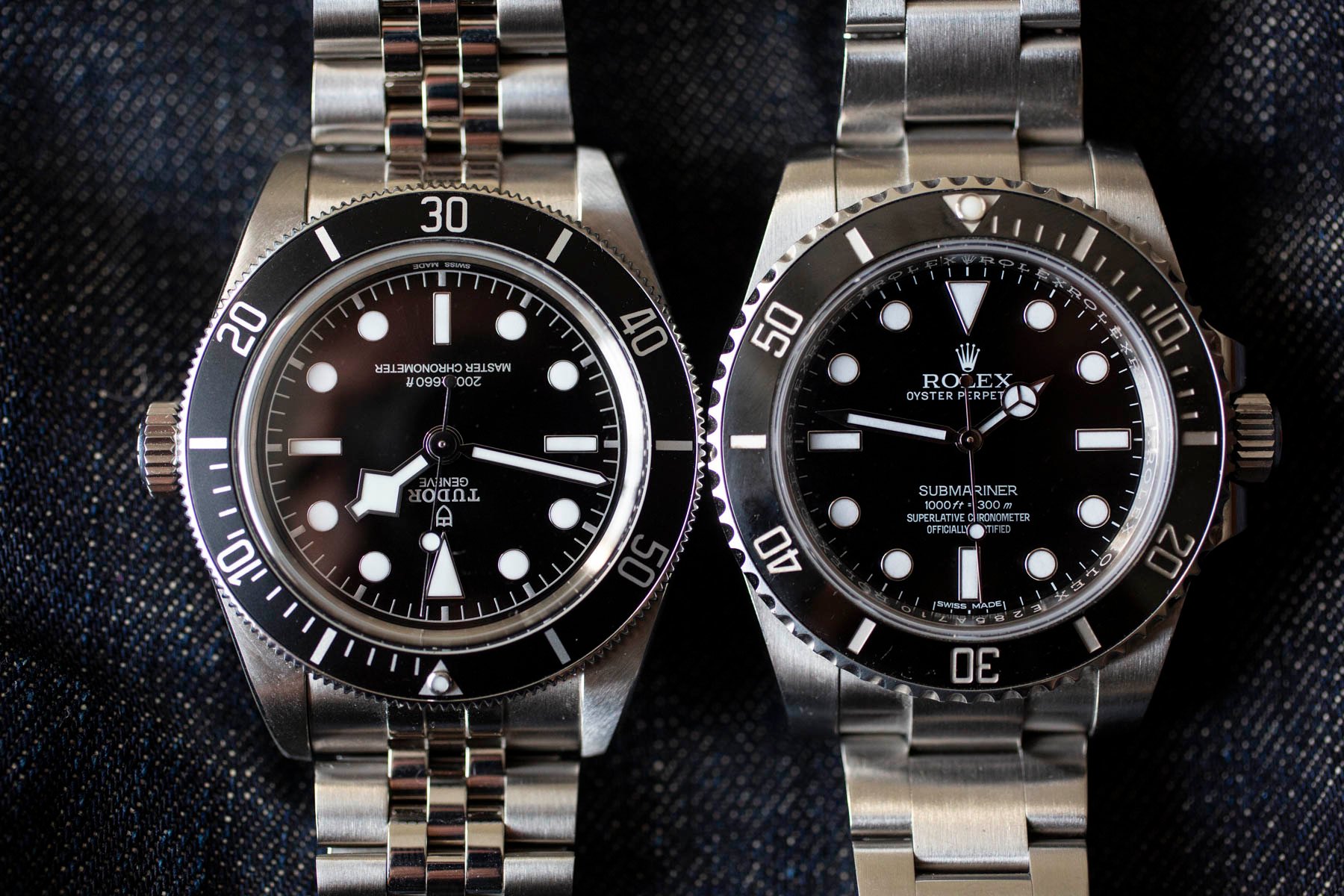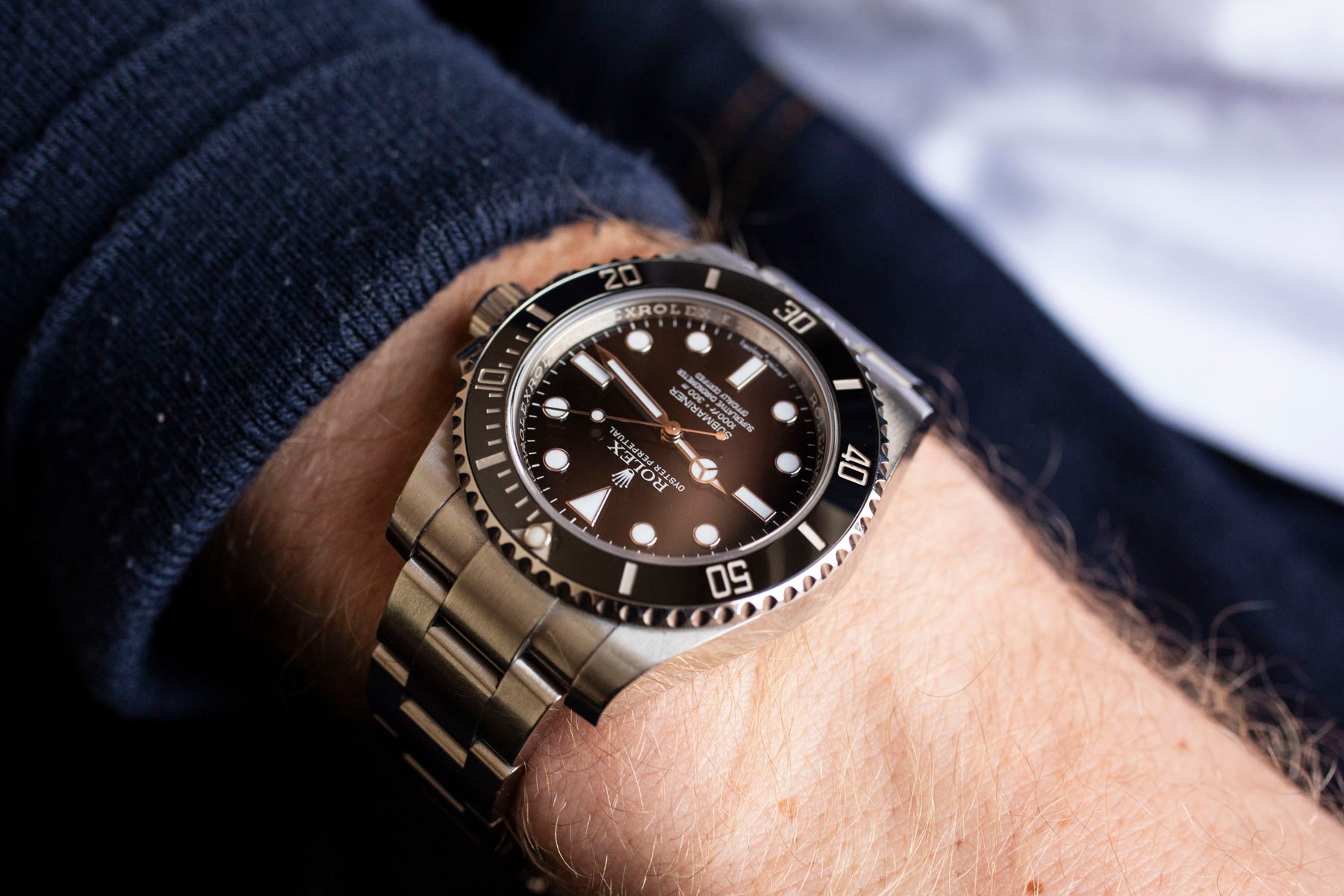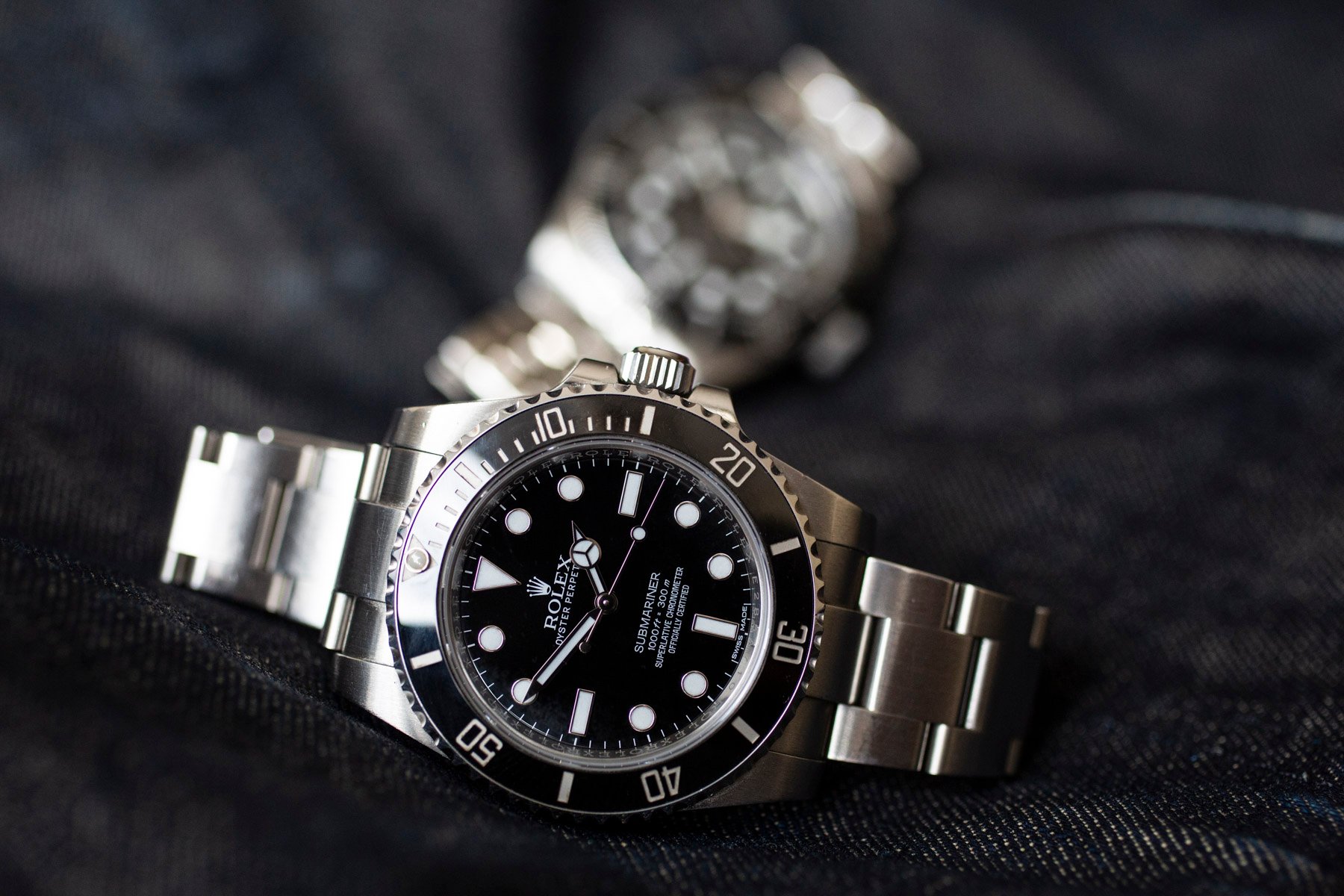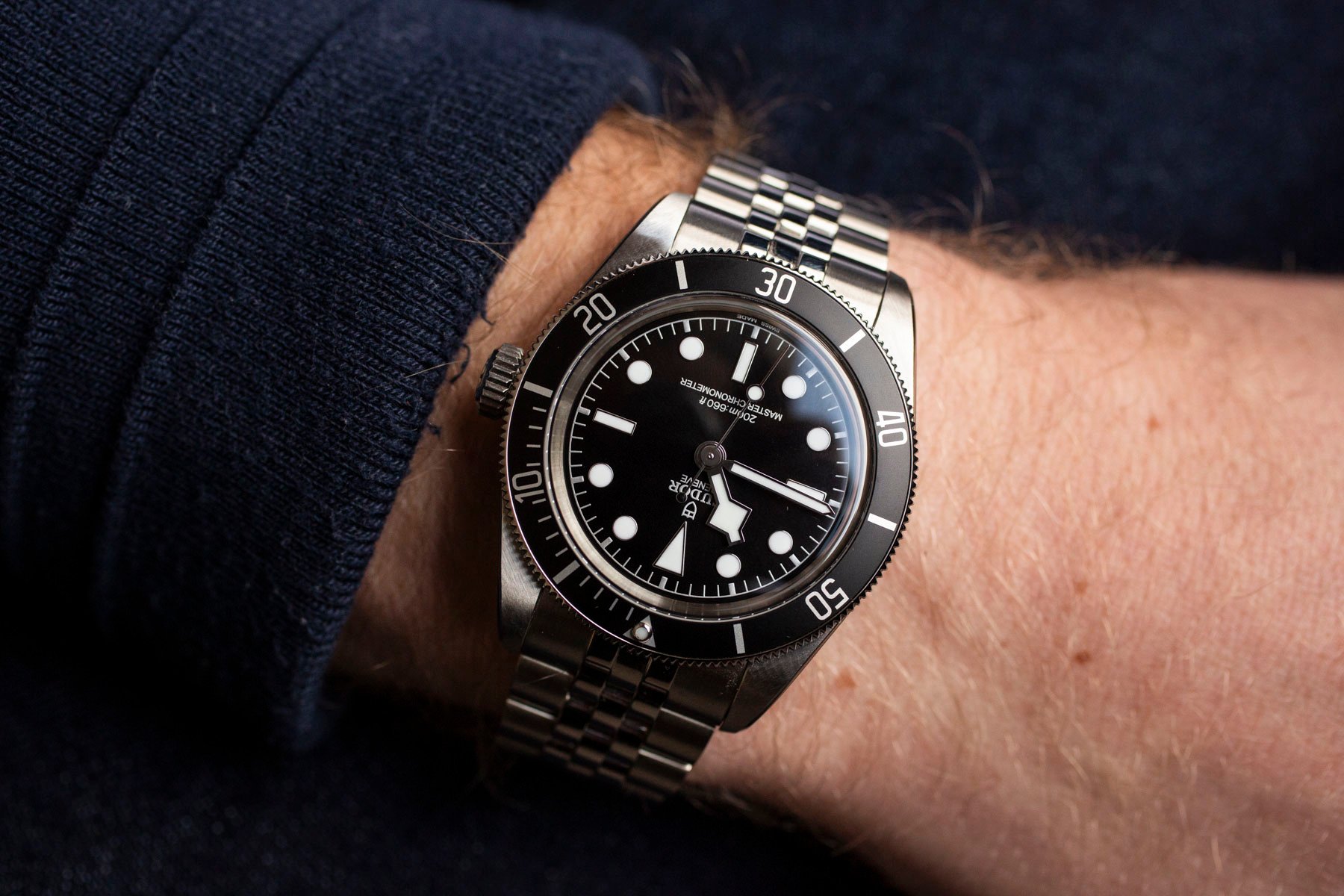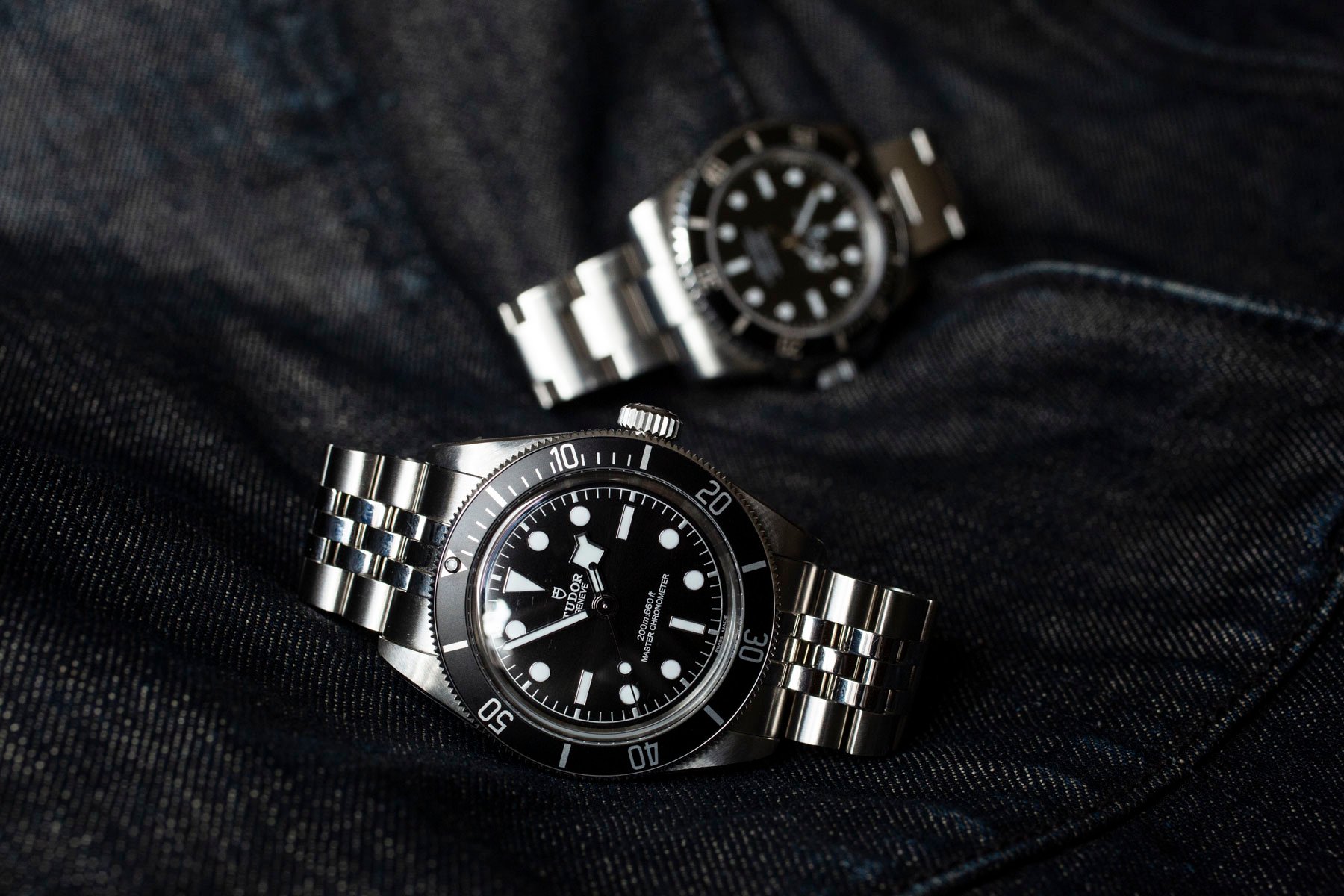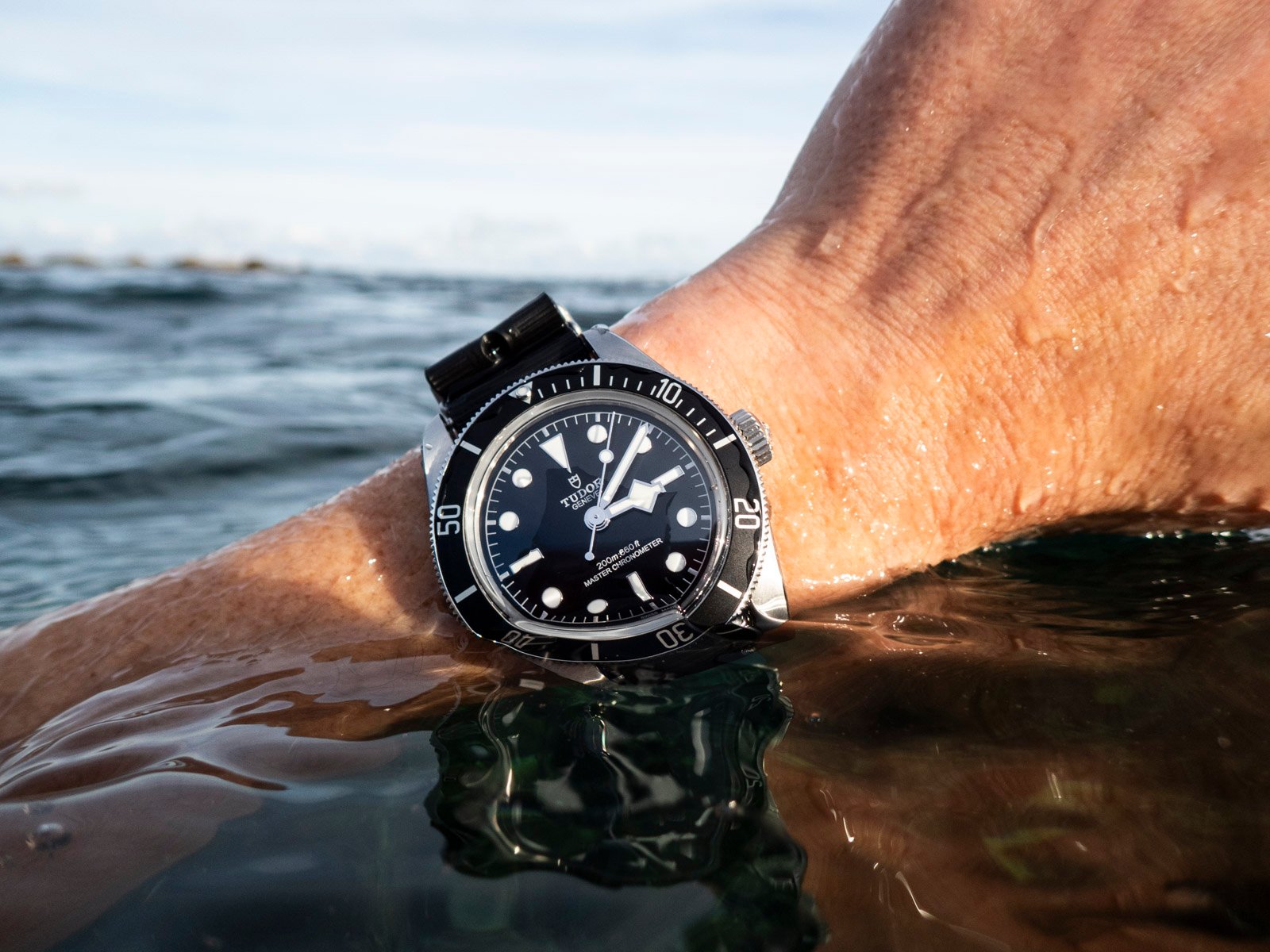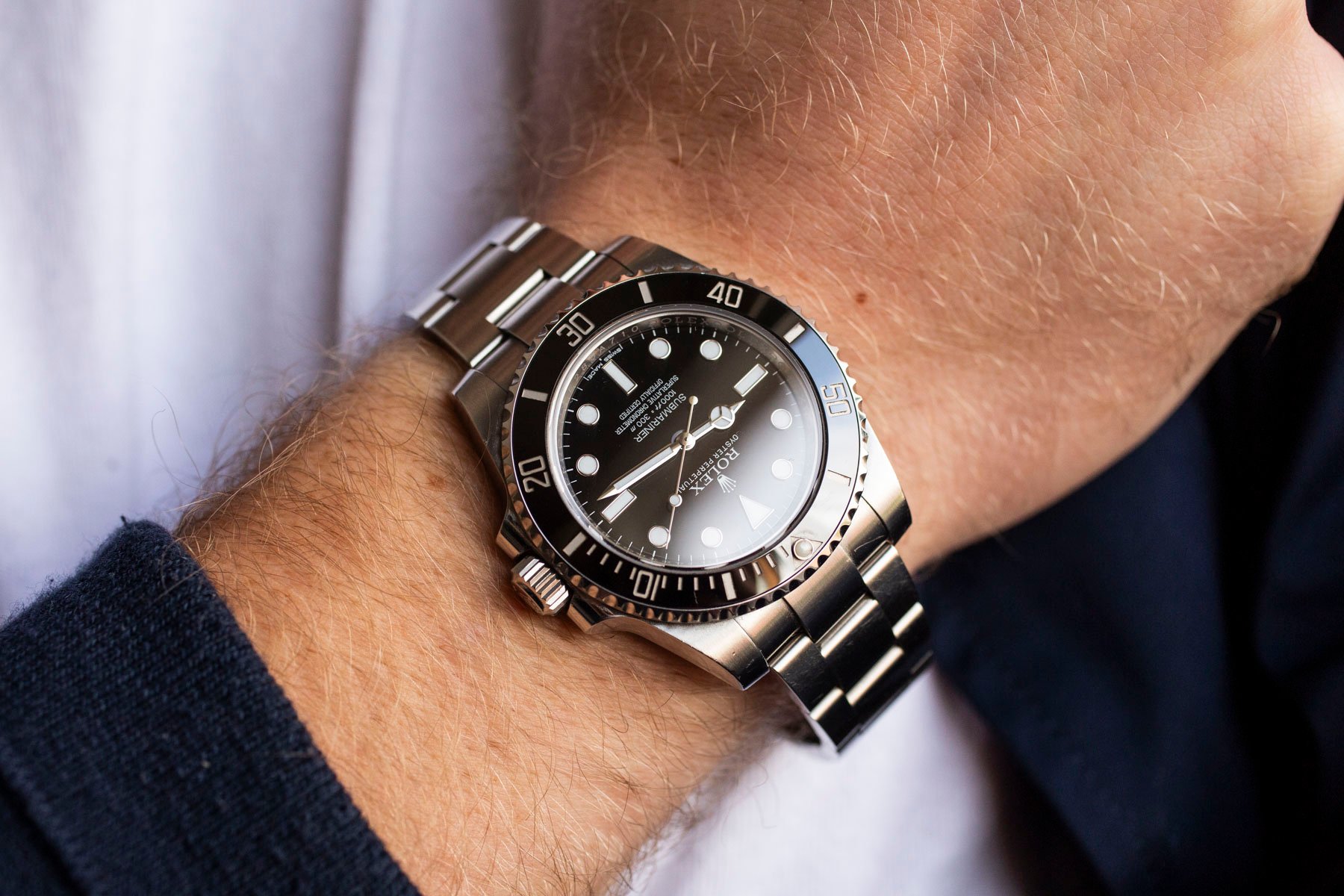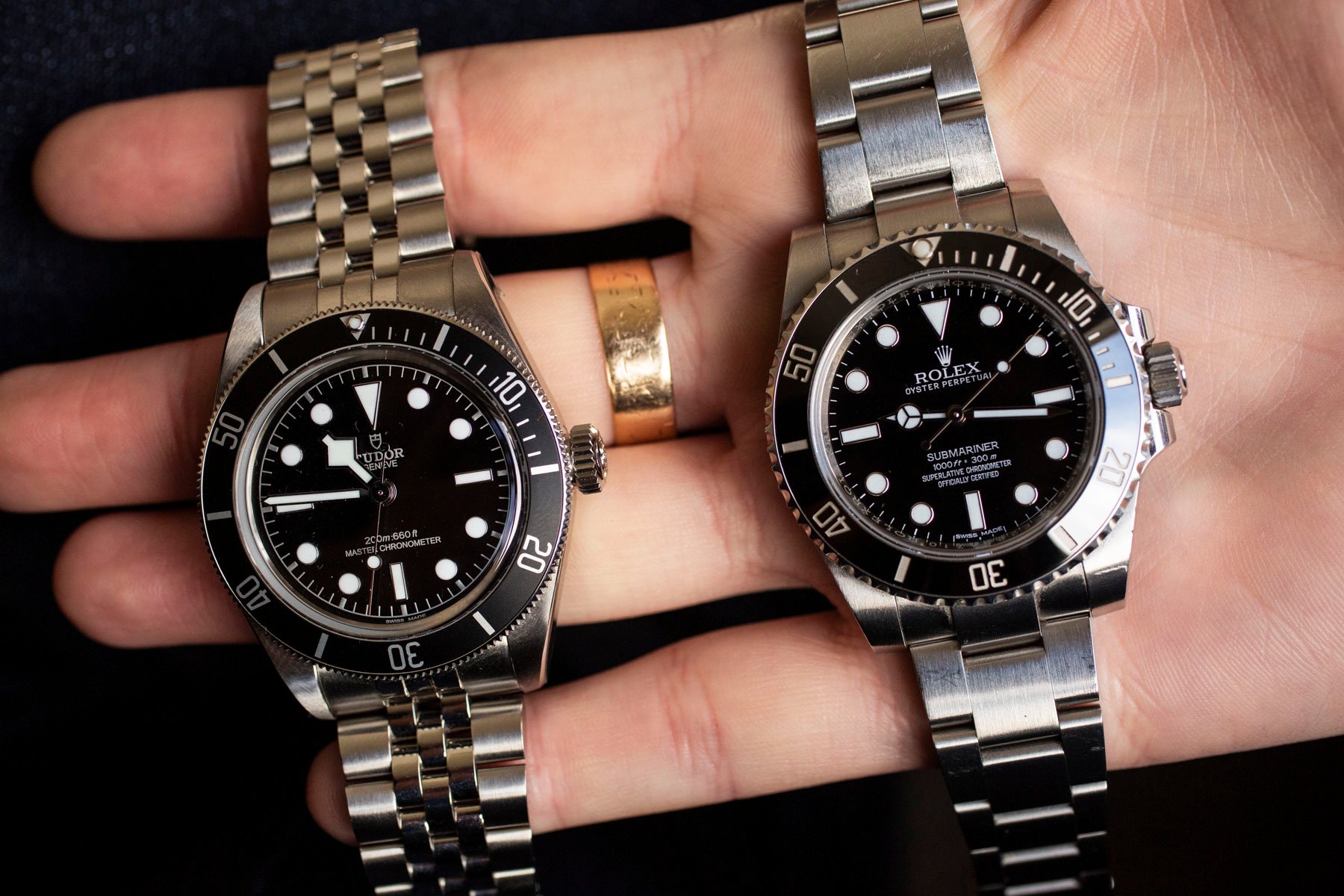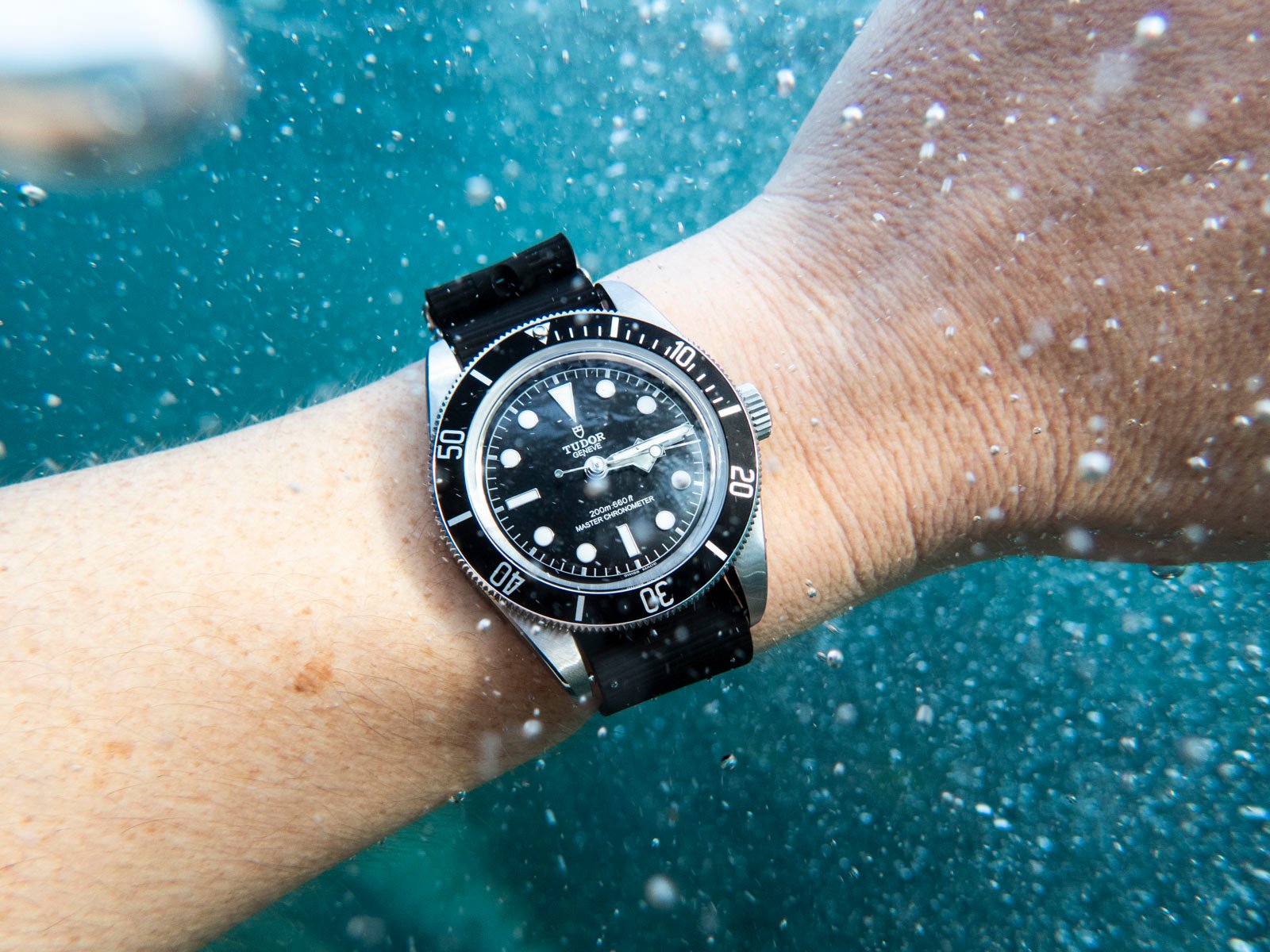Is Tudor’s New Black Bay More Compelling Than The Rolex Submariner?
Today, I want to talk about why I would opt for a modern-day Tudor Black Bay over a modern-day Rolex Submariner. The reasons are subjective and not based on specifications. I would also love to read your views in the comments section. Read on.
Rolex and Tudor are part of the same family. However, since Tudor’s renaissance a little over a decade ago, the brand has always been careful not to tread too closely to the modern iconic Rolex models. Tudor’s Black Bay 36 skirted within an intermediate distance of the Rolex Oyster Perpetual line, but the dive-style dial layout and chunky snowflake hands kept the watch firmly demarcated from the more classical stick hands and flowing case design of the OP.
Some likened the Black Bay 36 to a Rolex Explorer competitor instead. To me, this was a better comparison, but the option from Tudor was again different enough to not scratch anywhere close to the same itch that someone might have for a Rolex Explorer. Whatever the case, the Black Bay 36 was both different and familiar — “like a comfy pair of jeans,” as my colleague Mike Stockton put it.
Dancing in the shadows
That is not to say Tudor hasn’t had avant-garde watches. Take the North Flag as an example. Although it showed some design inspiration from the Ranger II, the North Flag was a brave design that, sadly, did not enjoy commercial success. So Tudor has mainly stuck with the vintage-inspired renditions of classic, traditional Rolex models. The latest Black Bay 58 GMT, for example, looks devilishly close to a Rolex “Coke.”
Recently, I argued that Tudor’s latest full-sized Black Bay, known colloquially as the Black Bay “Monochrome,” was one of the most significant releases by the brand in over a decade. One of my main reasons for making this point was that the watch revealed incremental changes in a winning design formula. This evolutionary approach to watch design is something right out of the Rolex playbook.
An opportunity for a Tudor/Rolex competition
The other major factor was purely aesthetic. For the first time in over a decade, Tudor had decided to hit the big red button with a black dial, white markers, and black bezel. People had been asking for this colorway since the initial Black Bay release in 2012 (and some even since the last Tudor Submariner references ended). All of a sudden, the Rolex Submariner was not the only dive watch in the Hans Wilsdorf stable that came in the iconic monochromatic uniform — no gilt here, folks.
So when the opportunity to handle both the new Tudor Black Bay and a Maxi-case Rolex Submariner arose, I knew it would make for an interesting comparison. Objectively, these are two boring watches duking it out. But, as I’ve said before, you never get bored of a boring watch. The Rolex, in this case, was the first of the Maxi-case Submariners, the Submariner ref. 114060. The reason I went for this model was that it is much easier to get than the current version, so I felt it would be a fairer comparison. However, if you feel differently about this particular concession, let me know in the comments.
The Rolex Submariner
Some of you made your feelings known when we pitched the Rolex Submariner and Tudor Black Bay in a Sunday Morning Showdown. For those who either didn’t see that story or can’t recall how the outcome of that poll, 58% of you voted for the Rolex, while 42% voted for the Tudor. At that time, the arguments centered around the technical qualities of the Submariner versus the Black Bay, including the use of ceramic in the bezel (as opposed to aluminum on the Tudor) and a superior caliber. I think we can all agree that on specifications, today’s Rolex Submariner wins, whereas things become a little more hotly contended with the previous five-digit version.
As I stated at the beginning of this article, I am not focusing on specifications. This is because I don’t focus on specifications when buying a watch (beyond how it wears and whether I can take it swimming, perhaps). That said, it is useful to note a few specs that affect how the watch wears on the wrist. The Rolex Submariner 114060 has a 904L stainless steel case that is 40mm in diameter, 48mm from lug to lug, and 12.5mm thin. Tudor’s Black Bay in 316L stainless steel measures 41mm in diameter, 50mm from lug to lug, and 13.6mm thick.
Tricked by specifications
The interesting thing to note in my paragraph above is that, as someone with smaller wrists, I should like the Rolex more. However, after spending a few days with it, I just couldn’t warm up to it like the slightly chunkier Tudor. The Tudor did not feel chunkier, by the way, but it should have. This is where specifications often fail to provide us with the answers. They can guide us, but they can also lead us astray.
How can I explain this? Well, first, the way the Tudor’s case wrapped around my wrist was, frankly, more sophisticated. Due to the protruding case back, the Rolex just floated on the wrist, whereas the Tudor, with its flush case back, hugged it. This was not just the case for me. I also tested this on other wrists larger than mine by convincing friends to try it on (it wasn’t hard). Second, the Maxi-case Submariner’s broad lugs created the impression of a watch in a permanent squat. This added to its sense of bulk.
The Tudor Black Bay
Perhaps I am the wrong audience for the Rolex Submariner. I don’t want to be, but I must be. You see, many of the technical disadvantages of the Tudor create a product that I genuinely prefer over the Rolex. Let’s start with the latter’s Maxi case since that is something I mentioned above. The case itself is beautifully finished, better than that of the Tudor. And the nature of the broader lug design probably contributes somewhat to the durability. But — and that is a big “but” — it loses a sense of elegance on the wrist. It comes across as brash to me.
Next is the Black Bay’s use of an aluminum bezel. The Submariner’s Cerachrom bezel is undoubtedly technically superior, more resistant to scratches, and more durable. But it’s also shiny and incredibly reflective. Plus, it picks up smudges and fingerprints like nothing else, and I even find it harder to read in sunny conditions. When using the two different watch bezels in the ocean, the Tudor is superior in use even if it’s inferior in technical specifications.
Evolutionary design
Part of Rolex’s winning formula and philosophy has been its broad approach to watch design. The Submariner has undergone multiple development phases, but the core identity remains. Sometimes when a watch brand revamps an existing product in its lineup, the changes can be so significant that they completely lose the original design’s essence.
This is not so with the Rolex Submariner, at least. However, Rolex’s constant technical improvement has also led to a flashier, more luxurious watch than the Submariners of old. In short, when considering the evolution of the modern Rolex Submariner, technical improvement has always prevailed over maintaining a reserved aesthetic. Now the Rolex brand is much further up the luxury chain than the original Submariner, which became a cultural icon, was. Maybe some of the magic dust has been lost along the way.
Perhaps Tudor’s philosophy speaks to me more
Tudor is not trapped by this pursuit of constant technical upgrades at the expense of almost all other aspects of design. The brand is better at juggling the competing design agendas of consistent styling and technical improvement. An aluminum bezel, though easier to damage than ceramic, is also, to me, more attractive and sometimes even better at doing its job. Even so, Tudor updated the testing regime in its latest Black Bay, improving the specifications of the movement. This METAS-certified Master Chronometer houses the MT5602-U caliber, which is accurate to 0/+5 seconds per day and antimagnetic to 15,000 gauss. In short, Tudor has been given further rein to balance technical improvements with aesthetic sensibilities. And the brand does so in a commercial product that costs about half the price of a new Rolex Submariner.
People often poo-poo Tudor for being the “poor man’s Rolex.” It’s a bit of a funny statement, really. I’ve always leaned towards the underdog, and Tudor has a legacy of being a watch for the common folks. As I noted here, “the fact that Tudor was a more affordable, working-class version of Rolex in the golden era of 20th-century Swiss watchmaking is a boon.” I don’t mind being associated with this context by wearing the brand’s watches.
Closing thoughts
For me, the modern Tudor Black Bay is a more enjoyable watch to wear and experience than the Maxi-case Rolex Submariner. If we look at them as a computer might and analyze them based on specifications, the Submariner would win every time. But the great thing about this hobby is that it encompasses much more than specifications, right? The feeling that a Tudor provides on the wrist is better and humbler, and it inspires confidence.
So if I were to think with my head, the Rolex Submariner would win this contest. But my heart leads me to the Tudor Black Bay, and, in this hobby, the heart wins every time. But what do you think, Fratelli? Would you seriously consider the new Black Bay over a Submariner? Was some of the magic of the previous Rolex Submariners lost when the Maxi case and Cerachrom bezel were introduced? Let me know in the comments.

